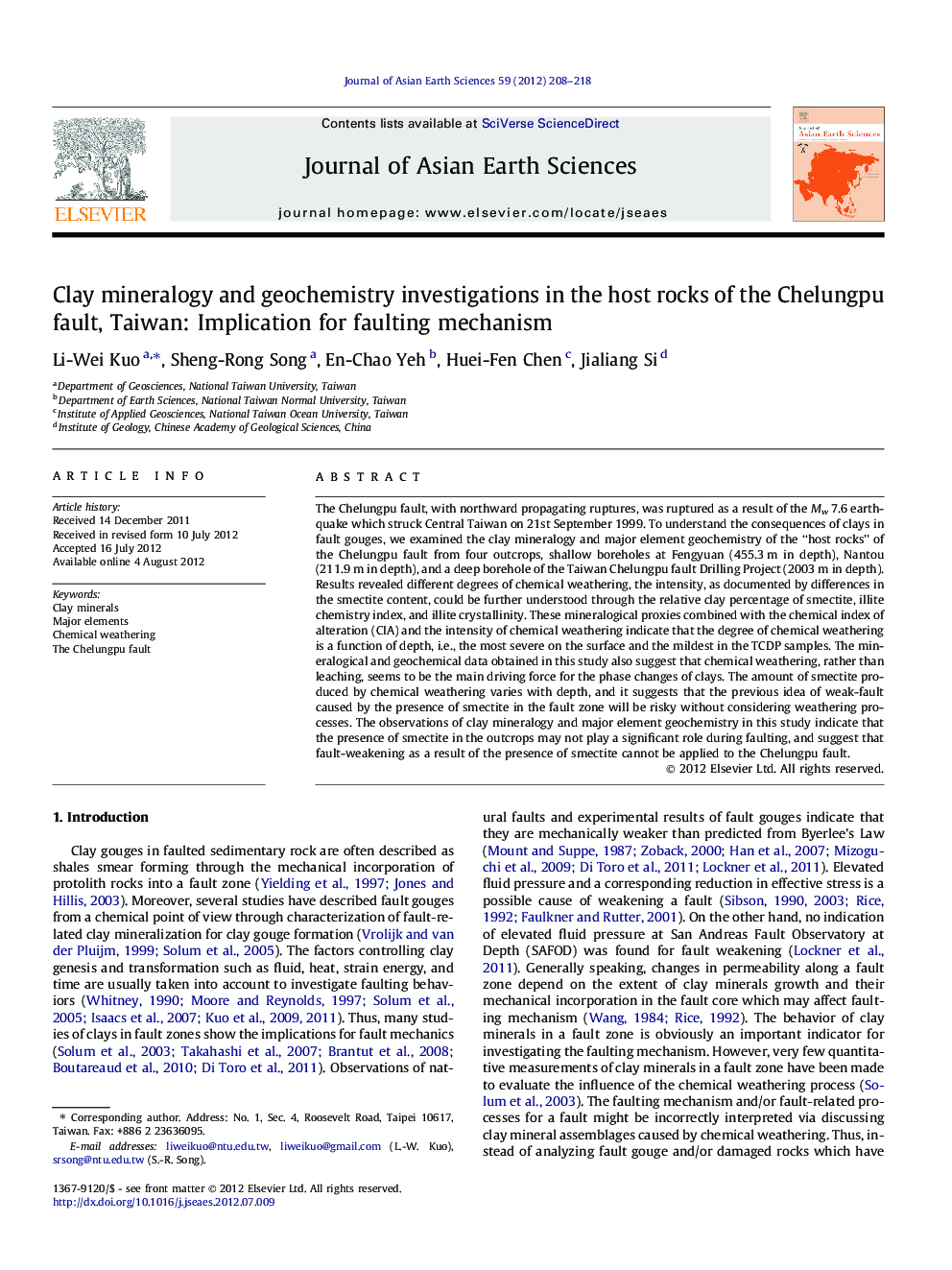| کد مقاله | کد نشریه | سال انتشار | مقاله انگلیسی | نسخه تمام متن |
|---|---|---|---|---|
| 4731366 | 1640406 | 2012 | 11 صفحه PDF | دانلود رایگان |

The Chelungpu fault, with northward propagating ruptures, was ruptured as a result of the Mw 7.6 earthquake which struck Central Taiwan on 21st September 1999. To understand the consequences of clays in fault gouges, we examined the clay mineralogy and major element geochemistry of the “host rocks” of the Chelungpu fault from four outcrops, shallow boreholes at Fengyuan (455.3 m in depth), Nantou (211.9 m in depth), and a deep borehole of the Taiwan Chelungpu fault Drilling Project (2003 m in depth). Results revealed different degrees of chemical weathering, the intensity, as documented by differences in the smectite content, could be further understood through the relative clay percentage of smectite, illite chemistry index, and illite crystallinity. These mineralogical proxies combined with the chemical index of alteration (CIA) and the intensity of chemical weathering indicate that the degree of chemical weathering is a function of depth, i.e., the most severe on the surface and the mildest in the TCDP samples. The mineralogical and geochemical data obtained in this study also suggest that chemical weathering, rather than leaching, seems to be the main driving force for the phase changes of clays. The amount of smectite produced by chemical weathering varies with depth, and it suggests that the previous idea of weak-fault caused by the presence of smectite in the fault zone will be risky without considering weathering processes. The observations of clay mineralogy and major element geochemistry in this study indicate that the presence of smectite in the outcrops may not play a significant role during faulting, and suggest that fault-weakening as a result of the presence of smectite cannot be applied to the Chelungpu fault.
► The investigation of clays and geochemistry are provided along the Chelungpu fault.
► The weathering is discovered with combining mineralogical proxy with geochemistry.
► The degree of the weathering is increasing upward to the surface.
► The fault-weakening because of smectite cannot be applied to the Chelungpu fault.
Journal: Journal of Asian Earth Sciences - Volume 59, 1 October 2012, Pages 208–218